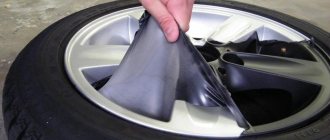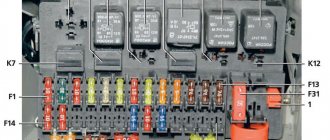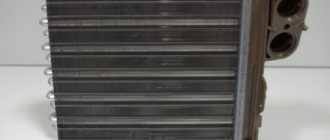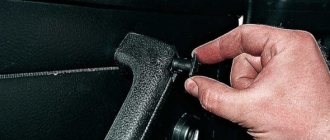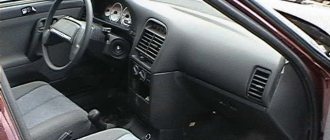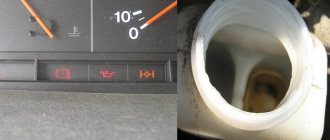Today, the construction industry is developing very rapidly, so multi-storey buildings are growing like mushrooms. Almost all houses are made using the same technology, so when considering one building you can confidently talk about all of them. Modern apartments have one small drawback, which developers worry little about, the soundproofing characteristics of walls and ceilings.
@zhidkaya_shumoizolyatsia
It’s a fairly common occurrence when you’re sitting in your apartment and hear your neighbors talking loudly or listening to music behind the wall. All this is to say that the walls are very thin and its soundproofing characteristics are low. To get rid of this problem, the only correct solution is to soundproof the walls, floors and ceilings.
Today, manufacturers of soundproofing materials offer customers a huge selection of products that can be selected according to various parameters and criteria. High-quality sound insulation will allow you to feel comfort and tranquility in your own apartment.
Advice! In order for liquid sound insulation in an apartment to be as effective as possible, an integrated approach is needed. It is not enough to isolate one surface; if you do, then completely. Using modern soundproofing materials, the noise level in the apartment can be reduced to 45 dB.
When it comes to soundproofing materials, there are several criteria by which it is selected. The very first thing that influences the choice is the area of housing. It is worth noting that in small rooms it is not recommended to use frame sound insulation. Today there are materials that make it possible to provide reliable and effective sound insulation with minimal loss of space.
@zhidkaya_shumoizolyatsia
Recently, liquid noise insulation has become popular among owners of small apartments, which, in addition to its affordable cost, can effectively protect the house from extraneous sounds. In this material we will try to consider the advantages and disadvantages of liquid sound insulation, as well as its scope of application in detail.
What is the essence of liquid sound insulation?
Liquid sound insulation is a material that is applied to the surface of a wall, floor or ceiling to provide protection against the penetration of various noises and sounds. As is known today, noise is divided into two main types:
- Air;
- Vibrating.
Airborne noise refers to sounds that are transmitted through the air. Airborne sounds include: a loud TV, a conversation heard from neighbors or sounds coming from the street. To absorb airborne noise, a soft and porous surface of a soundproofing material is required, which, due to its structure, absorbs some of the waves and makes it quite acceptable.
Vibrating sounds are mainly caused by the operation of electric tools or household appliances. Such noise can be transmitted over hard surfaces, and to protect against it, special vibration pads and other elements are needed.
It is worth noting that among all insulating materials there is practically no product that could simultaneously and with the same performance retain both types of noise. Some materials are porous and soft, others, on the contrary, are knitted and elastic. The only insulation option that combines two types of insulation is liquid Shumka.
Despite the fact that this material only recently began to appear on the market, it has already managed to attract the attention of many buyers. It is worth noting that due to its soft structure, after drying, the composition hardens and forms a so-called vibration barrier, which does not allow noise and sounds to pass through.
The composition is sold in liquid form and applied to surfaces three centimeters thick. A small layer of material is guaranteed to provide effective protection against sound waves. After drying, the soundproofing of the walls in the apartment has a bumpy surface, so it cannot be used as a finishing material; it must be covered with plasterboard or chipboards.
Preparing for work
Here you need to know the rules, approximately the same as what a painter must know. So, before you start smearing liquid Shumka, do the following:
- We place the car on a lift or slipway or overpass for repairs. If there is no such luxury nearby, then we use a regular jack and sawhorses (so that the car does not hang on the jack).
- Remove the wheels.
- Wash it thoroughly and wait until it dries.
Professionals say that a clean foundation is the trump card. If everything is clean, then the sound insulation will not fly off due to vibration.
Types of liquid soundproofing materials
Today, manufacturers of liquid sound insulation offer customers various types of material, which can be selected according to manufacturer, characteristics and cost. Polyurethane foam materials are produced in different countries, which determines their type, efficiency and price. Among the most common are the following:
- Polyurethane foam Synthesia this material is produced in Spain. The main advantage of sound insulation is its reasonable cost in relation to quality. The material is made from environmentally friendly ingredients, so it can be used for processing in residential areas. Also among the positive qualities of foam is the fact that it can be used at different temperatures.
- Ecotermix polyurethane foam sound insulation is a product of joint production between Russia and China. The material can be used in various rooms and has a high level of fire resistance. This sound insulation also protects wall surfaces from biological formations of fungus and mold. Speaking about the cost of foam, it can compete with products from other manufacturers.
- Demilec polyurethane foam material is manufactured in the USA. This product can be classified as a top-class product, as evidenced by its high quality, reliability and cost. The effectiveness of sound insulation is quite good, but not everyone can afford it.
- Bayer polyurethane foam is produced in Germany and is already a fairly well-known brand throughout the world. As always, the consistent German quality and relatively low cost of the material make it popular among buyers. If you need to perform high-quality sound insulation at a relatively low cost, then the Bayer brand provides its product.
@zhidkaya_shumoizolyatsia
Depending on your budget, you can choose the most suitable soundproofing option, which will help protect your apartment from noise and at the same time save money.
"Prime Anti-Noise"
Liquid sound insulation "Prime Anti-Noise" is a universal product that simultaneously protects the body from corrosion and reduces the level of noise coming from under the car.
It contains white spirit, modified bitumen, perlite, synthetic resin, crumb rubber, aluminum and zinc powder, as well as corrosion inhibitors. The product is absolutely odorless and completely safe for health. It has high sound insulation, anti-gravel and anti-corrosion properties. Sold as an aerosol in cans. “Anti-noise” can be used to “blow out” hard-to-reach places (hidden cavities of doors, thresholds, side members).
Rubber bitumen mastics
Rubber-bitumen mastic is used as waterproofing. Due to the chemical composition of the substance, mastic can be used to treat various surfaces. Of course, mastic can only be used as sound insulation in a car, and as for an apartment, it is not necessary, but if it is necessary to carry out work to protect the surface from aggressive environments, it is one of the best.
@zhidkaya_shumoizolyatsia
Using rubber bitumen mastic, external sound insulation can be carried out. Quite often, rubber bitumen mastic is used for various types of roofs. Due to its characteristics, the material provides hydro and sound insulation, but this applies mainly to upper floors and apartments.
NoiseLIQUIDator
NoiseLIQUIDator is a good Russian-made vibration-absorbing mastic, used mostly for arches, although it is also suitable for the bottom. It consists of two synthetic components: a base and a hardener, mixed in certain proportions immediately before starting work. Can be used to reduce noise on ribbed metal surfaces: bottoms, frames, thresholds, etc. Not recommended for application to plastic.
Apply by hand with a spatula. The hardening time of one layer is a day.
Advantages and disadvantages of liquid sound insulation
Like any other material, liquid sound insulation has its advantages and disadvantages. Speaking about the advantages of the material, the following should be noted:
- In addition to soundproofing properties, the treated surface also improves the thermal insulation of the apartment, which will help save on heating costs in winter.
- Due to the structure of the material, after application it penetrates into cracks and pores, effectively insulating the room. Often this material is used to process window and door openings where cracks may form.
- The foam has high adhesion to various surfaces, which makes it possible to apply sound insulation even without preliminary surface preparation. Upon completion of the work, a minimum of debris and waste remains.
- Using polyurethane foam, you can completely seal the apartment, which will improve the soundproofing qualities of the room. When applying the material to the walls and ceiling surface, a monolithic layer is formed that will plug all the cracks on the surface.
- Using foam, you can save space in your apartment. If the sound insulation has a layer of three centimeters and add to this the parameters of the drywall sheet, it turns out that complete sound insulation will have a thickness of four centimeters. Liquid insulation is the optimal solution for small-sized housing.
- The weight of the material is very light, so the structure is not subject to additional load.
- The structure of the material allows for effective noise insulation at different wavelengths.
@zhidkaya_shumoizolyatsia
Speaking about the disadvantages of polyurethane foam, the material has few of them, and the main one is the difficulty of dismantling. Despite the duration of operation, which is more than fifty years, the sound insulation will still have to be changed, and it will be difficult to wipe it off the wall. These are, perhaps, all the negative aspects of liquid sound insulation.
Classification of body types
Over the past two decades, the automotive industry has achieved a significant breakthrough in the field of design and technical equipment of cars. In the modern automotive industry, the classification of body types is based on the following parameters: shape, purpose, layout, functionality, degree of load. Passenger vehicles traditionally have cargo-passenger and passenger body frame types of semi-frame and frameless construction.
Body frames are distinguished by the location of passengers, cargo, power unit, and the degree to which they can support the weight of cargo and passengers. So, the machine can have three, two, one compartments. All body styles have standard names used throughout the world, but some countries produce separate body types with a different name.
Liquid products for external sound insulation
External sound insulation is necessary for houses and apartments where the roof is very thin and through it you can hear what is happening on the street or during rain. Using foam to soundproof a roof is impractical and even stupid. The optimal solution for this type of protection is bituminous materials. In accordance with the characteristics of the composition, you can select the optimal solution. Recently, rubber-bitumen mastic has been used as roof sound insulation. It is thanks to the properties and qualities of the material that it has long been popular among motorists. The structure of the material is viscous, but at the same time it can absorb airborne noise well, which is very important if your apartment is on the top floor.
general information
Today, there are several products that can be classified as “liquid insulators”. They are combined by materials in their composition, but the properties of rigidity, sealing, elasticity and adhesion can vary significantly.
This is explained by the fact that each part of the car body is exposed to different external influences - from the influence of chemicals to extreme temperatures. Therefore, the sealant coating must have suitable characteristics to perform its task. For example, sound insulation of wheel arches is carried out taking into account several unfavorable factors at once.
Liquid sound insulation for internal treatment
Bituminous mastic is not suitable for internal use, but there are materials that will protect the house from noise and save heat much more effectively. Sprayed polyurethane foam is the best sound insulation option for a small apartment. It is worth noting that with a thickness of only three centimeters, the layer effectively retains both airborne and vibration noise.
To treat the surface of a wall or ceiling, no special preparation is required; it is enough to clean the area being treated of peeling elements and you can get to work. In terms of time, such processing will take about three hours, provided that a highly qualified specialist works. Polyurethane foam is applied using special equipment, so it is impossible to do without the involvement of specialists. Not every home has a gun for liquid insulation, so it’s worth turning to the experts.
After the soundproofing is applied, it needs to dry. After final drying, the surface is covered with sheets of plasterboard or other decorative elements.
Comprehensive sound insulation with liquid materials
Creating optimal protection from noise in an apartment is possible only through an integrated approach. If the external and internal walls are treated with liquid soundproofing materials, an optimal result can be achieved.
Of course, complex work requires certain expenses, but taking into account the performance characteristics of the materials, we can say with confidence that your home will have comfortable conditions for at least fifty years, which is, in principle, quite a long time. High-quality sound insulation will protect the house from all types of noise, creating the necessary coziness and comfort.
Advice! If you treat only one wall, the effect will be insignificant; an exclusively comprehensive approach will ensure complete peace and quiet in your home.
With rosemary
The piquant aroma of juicy trout flesh awakens the appetite, and the low calorie content allows you to eat a large portion of fish. Required: 2 carcasses, 1 tsp. coarsely ground salt in a mortar, a pinch of ground pepper, 2 onions, 2 branches of aromatic rosemary, a slice of 30 g butter.
Step-by-step cooking method: Clean the fish from scales and entrails. Place an onion bed on the bottom of an oiled baking sheet and fish on it. Season the carcasses with pepper, salt, and put rosemary in the belly. Coat the trout with melted butter and bake for 15 minutes at 200 degrees. Present with lemon rings, toasted bread and any side dish you like.
Process and processing features
To apply liquid sound insulation indoors, you need special technical equipment. Under pressure, the chemical composition is applied to the surface, forming a polyurethane layer. Such insulation will protect the house from noise, cold penetration and various pests.
The work process is simple. If working with other materials requires certain preparation, then in the case of polyurethane foam, all this is not needed. If there are large peeling elements on the surface of the wall, then they can be dismantled, but otherwise nothing is needed.
Application technology
The technological process of applying sound insulation has some similarities with painting. Liquid noise insulation must be applied evenly, like regular paint in several layers. Do not hold the sprayer at one point for a long time to prevent large foam formation. The thickness of the layer should be three centimeters, this is enough for the material to provide the necessary level of protection.
Important! Using liquid sound insulation, you can completely blow out the walls, making the room completely airtight.
Stage 1. Preparatory
There is no preparatory stage as such when treating with liquid sound insulation, but you can clean the wall surface from peeling elements. It also doesn’t hurt to cover the floor with plastic film or paper. Foam that gets on the floor will dry out and be difficult to clean.
If there are wires and sockets on the wall, then they should be covered first so that in the end you do not have to completely change the wiring. A special corrugated casing should be used for cables. Upon completion of the preparatory work, equipment is brought in and application can begin.
Stage 2. Primer
The surface of the wall should be treated with a primer. As with any finish, the primer provides maximum adhesion to the coating. You can apply the primer either with a hand tool: a roller or brush, but also with a spray gun. Liquid impregnation of walls is a prerequisite when working with surfaces.
@zhidkaya_shumoizolyatsia
Thanks to the primer, fungi or mold do not form on the surface of the wall under the sound insulation. The primer must be applied evenly over the entire surface. It is better to start applying from the top of the room, this way you will not get smudges.
Stage 3. Applying sound insulation
Polyurethane foam must be applied in two stages. The first layer is thin for the binder, and the second is denser. It is during the application of the second layer that a reliable soundproofing coating is formed. The polymer expands, and the resulting bubbles will be an excellent insulating layer. When working with polymer, a special pressure-operated tool is used. When the insulation layer has reached three centimeters over the entire surface, you can finish processing and put away the equipment.
@zhidkaya_shumoizolyatsia
Car service versus self-application
To correctly apply liquid sound insulation, you need to not only follow the instructions, but also have at least a general understanding of the types of sound insulation materials. Rubber-bitumen mastics, aerosols, synthetic rubber-based products and two-component mastics are available on sale. Each type of product has its own characteristics, features, strengths and weaknesses. It is better to study them in advance so as not to waste money, but to choose an insulator that is really suitable for carrying out the planned work on noise insulation of the vehicle. It is important to add that liquid insulators are divided into two large groups.
- No pre-priming. This means that the insulator can be applied to the surface without using primers first. Such tools save time, are convenient and practical to use. But the absence of a layer of soil can negatively affect the quality of adhesion to the surface.
- With preliminary priming. There is a category of liquid-type soundproofing materials, before applying which the metal must be treated with a primer. Although this requires more time to carry out noise insulation measures, their effectiveness is higher. The primer improves the quality of adhesion and additionally smoothes out minor unevenness.
Choosing the right product is about half the success. Then everything depends on how correctly and rationally the liquid sound insulation will be used. Car owners have two main options. The first is to do everything yourself. When processing the underbody of the car and other elements of the car, liquid noise insulation will be applied independently. Saves money, but requires some effort and time. Or choose the second path by contacting a car service center for help.
The estimated cost of treating a passenger car with liquid rubber in the interior will be approximately 10 thousand rubles. This is a fairly common service nowadays, which many car services are ready to provide. If you do not have the skills to work with sound insulation, or simply do not have enough time, but have a free budget of this size, then it is better to turn to trusted specialists. The work will take several days. To the costs of sound insulation itself, you should add the costs of materials. If you don’t have that much money, or if you don’t want to give it away just like that, you should consider the option of independently soundproofing your car using liquid rubber.
The question is different. A large number of car owners cannot afford such costs for the services of specialists. And if a person is more wealthy, then he mainly buys cars that already have decent sound insulation from the factory, which does not require special intervention. When a car is very noisy, this indicates that this is an old foreign car, or a representative of the domestic automotive industry. Both cases indirectly confirm that the owner does not have a lot of money to spend on workshop services. There is a desire to save money, and therefore, to achieve this goal, many people prefer to apply liquid insulation themselves. When it comes to traditional sound insulation, which is carried out using special mats and panels, many motorists can cope with this task. And working with liquid compounds is much easier, as proven by the experience of many vehicle owners. If you need to treat wheel arches, there is unlikely to be any difficulty in dismantling the wheels and spraying the compound in an even layer over the surfaces of the arches.
You can never rule out the possibility of errors. This is a completely natural phenomenon. Mistakes are made by beginners, experienced motorists and even specialists from auto repair shops. No one guarantees the quality of sound insulation, which is carried out at a garage-type service station in some cooperative, or in a cheap auto repair shop. Some replace the high-quality insulation you bought with cheaper compounds, others apply only one instead of the required 2-3 layers. The technician may not remove all contaminants, forget to degrease the surfaces before application, or ignore the mandatory requirement to apply a primer. Therefore, we can make a bold conclusion that sometimes it is better to do everything yourself. This is a guarantee of quality, since the owner will take a responsible approach to each stage of processing the machine with soundproofing materials. You just need to take a high-quality liquid mixture, strictly follow the rules, rely on the insulator manufacturer’s instructions, and also listen to a few practical tips.
